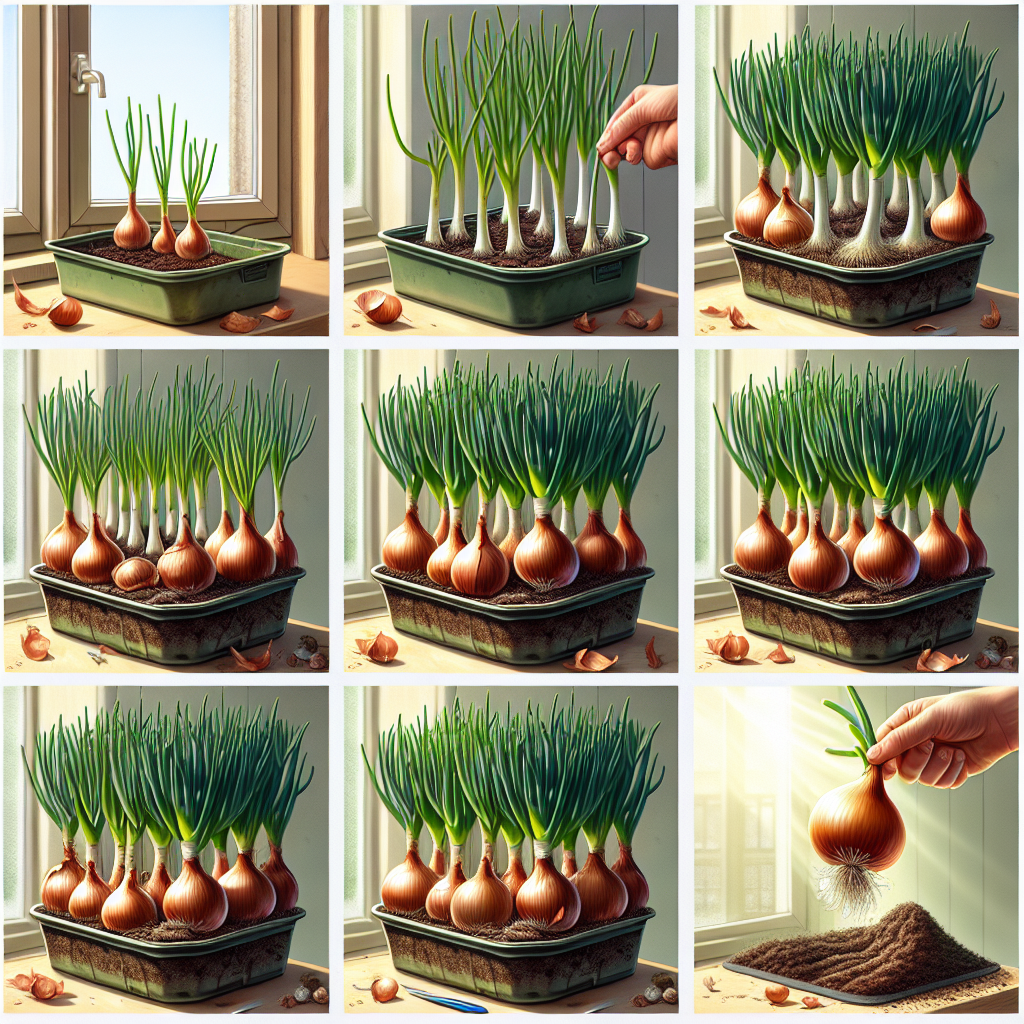Onions are a versatile and essential ingredient in many dishes, adding flavor and depth to soups, stews, salads, and more. While they are typically grown in outdoor gardens, it is entirely possible to grow onions indoors as well. In this article, we will explore the process of growing onions indoors through container gardening.
Container gardening is a great option for those who may not have access to outdoor garden space or who want to grow their own produce year-round. By growing onions in containers indoors, you can enjoy fresh, homegrown onions throughout the year.
Choosing the Right Container
The first step in growing onions indoors is selecting the right container. Onions have shallow roots, so a wide but shallow container works best. A container that is at least 6 inches deep and 12 inches wide is ideal for growing onions.
In addition to size, it’s important to choose a container with good drainage holes at the bottom. Onions do not like soggy conditions and require well-draining soil to thrive.
Choosing the Right Onion Variety
There are several varieties of onions that can be grown indoors. Some popular choices include green onions (also known as scallions), shallots, and bunching onions. These varieties tend to do well in containers and have shorter growing seasons compared to traditional bulb onions.
Planting Onions
When planting onions indoors, start by filling your chosen container with a high-quality potting mix that contains organic matter and nutrients. Avoid using garden soil as it may contain pests or diseases that could harm your plants.
If planting onion sets (small bulbs) or onion transplants (young plants), space them about 2 inches apart in rows within your container. If planting onion seeds, sprinkle them evenly over the soil surface and cover lightly with more potting mix.
Watering and Care
Onions require consistent moisture to grow well but do not like to sit in waterlogged soil. Water your onion plants regularly but allow the top inch of soil to dry out between waterings. It’s important not to overwater as this can lead to root rot.
Fertilize your onion plants every few weeks with a balanced liquid fertilizer or slow-release fertilizer pellets. This will help ensure that your plants have access to the nutrients they need for healthy growth.
Light Requirements
Onions require full sun or at least six hours of direct sunlight per day to thrive. Place your container in a sunny windowsill or supplement natural light with grow lights if needed. Rotate your container regularly so that all sides of the plant receive adequate light for even growth.
Harvesting Onions
The time it takes for onions to mature varies depending on the variety you’re growing. Green onions can be harvested when they reach about 6 inches tall by cutting them from the base as needed. Shallots can be harvested when their tops turn brown and start to die back.
Bunching onions can be harvested by pulling up the entire plant once it reaches full size. Traditional bulb onions are ready for harvest when their tops begin to yellow and fall over naturally.
To harvest bulb onions, gently lift them from the soil with a garden fork or shovel being careful not to damage the bulbs. Allow harvested bulbs to dry in a warm, well-ventilated area for a few days before storing them in a cool, dark place for long-term storage.
Growing Tips
Here are some additional tips for successfully growing onions indoors:
1) Thin out seedlings: If you’re starting from seed, thin out seedlings once they reach about 2-3 inches tall so that there is enough space between plants for healthy growth.
2) Provide airflow: Onions benefit from good air circulation around their foliage which helps prevent diseases like powdery mildew.
3) Mulch: Mulching around your onion plants can help retain moisture in the soil and discourage weed growth.
4) Temperature: Onions prefer cooler temperatures between 55-75°F (13-24°C) so avoid placing your containers near heat sources or direct sunlight.
5) Pest control: Keep an eye out for pests like aphids or thrips which can damage onion plants especially when grown indoors.
In conclusion…
Growing onions indoors through container gardening is a rewarding experience that allows you to enjoy fresh produce year-round regardless of outdoor space limitations. With proper care and attention to light, water, and nutrient needs, you can successfully grow a variety of onion types in containers inside your home.
Whether you’re a seasoned gardener looking for new challenges or someone starting out with indoor gardening for the first time, give growing onions indoors a try! With patience and dedication, you’ll soon be enjoying homegrown onions straight from your windowsill garden.
So gather your supplies, select an appropriate container, choose your favorite onion variety, plant those seeds or sets – then sit back and watch as your indoor onion garden flourishes before your very eyes! Happy growing!













